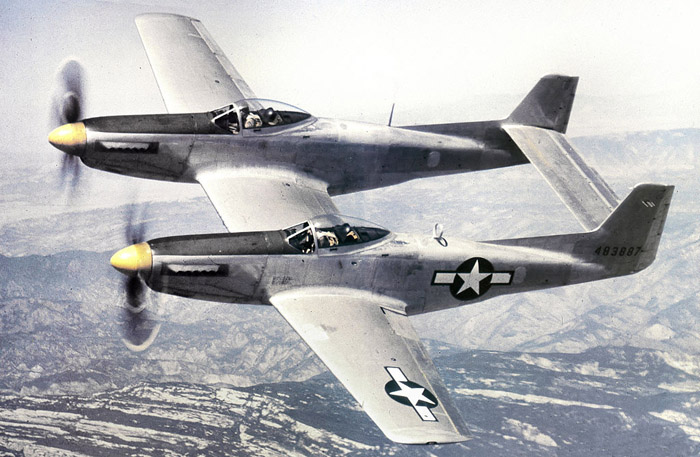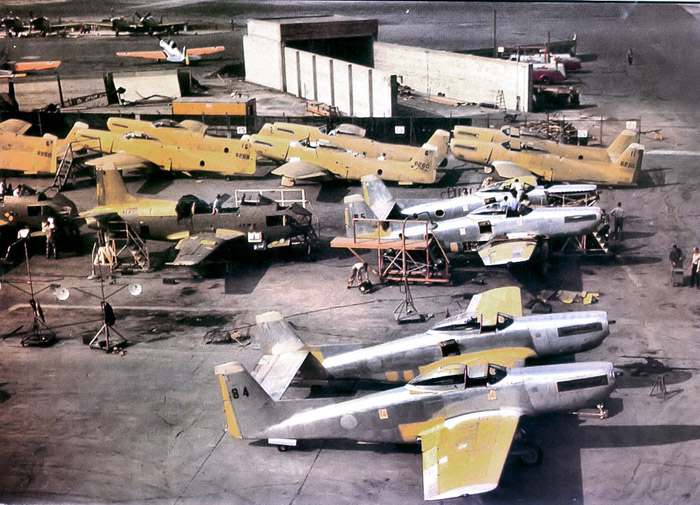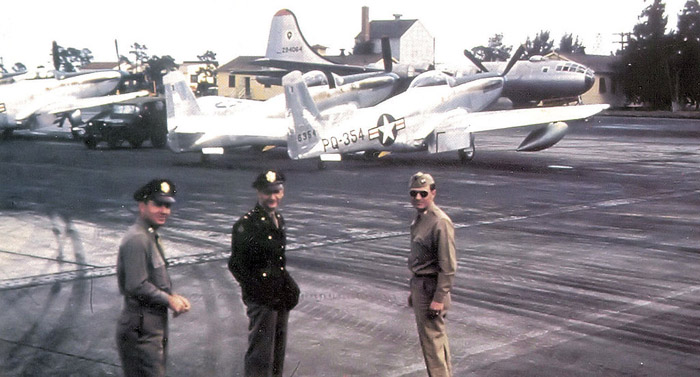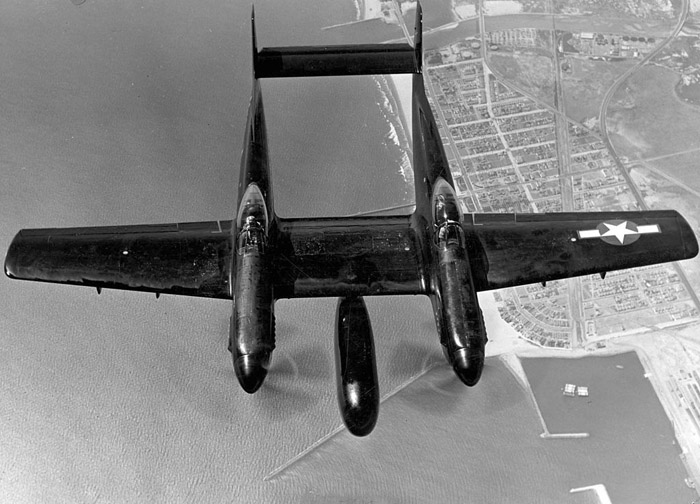No, you are not seeing double and this isn’t some clever Photoshop of P-51 Mustang. This remarkable fighter plane is a Twin Mustang. P-82 Twin Mustang was the climax of the famous World War II P-51 Mustang series. North American produced 272 of the double-fuselage airplanes for the Air Force and there were three versions of the Twin Mustang in service, the P-82E, P-82F and P-82G.

A radical departure from the conventional single-fuselage airplane, the Twin Mustang was formed by two slightly elongated P-51 fuselages joined by the wing and the horizontal stabilizer. With a pilot in each fuselage, it reduced the problem of pilot fatigue on ultra-long-range missions. The P-82F and G models carried a radar operator in the right cockpit instead of a co-pilot.

With a speed of more than 475 mph (764 kph), the Twin Mustang had a combat range of more than 1,600 miles (2,574 kilometers) with full armament, even farther with drop tanks. Initially intended as a very long-range (VLR) escort fighter, the F-82 was designed to escort Boeing B-29 Superfortress bombers on missions exceeding 2,000 miles (3,200 km)


On 27 February 1947, P-82B 44-65168, named Betty Jo and flown by Colonel Robert E. Thacker, made history when it flew nonstop from Hawaii to New York without refueling, a distance of 5,051 mi (8,129 km) in 14 hr 32 min. To this day, it remains the longest nonstop flight ever made by a propeller-driven fighter, and the fastest such a distance has ever been covered in a piston-engined aircraft.

Both engine throttles and both propellers were controllable from either cockpit by manually operated levers. The pilot’s cockpit on the left contained the normal flight and engine instruments, while the co-pilot on the right had sufficient instruments for relief and emergency operation. A simplified cockpit arrangement improved pilot comfort, including a tilting, adjustable seat to reduce fatigue during long flights.

F-82s stationed in Japan and Okinawa became the first American warplanes to respond to the Communist invasion of South Korea in 1950. 27 F-82Gs of the 35 in Japan arrived in Korea, and upon their arrival they orbited Kimpo Airfield in three flights, each above the other. A mixed group of five North Korean fighters (Yak-9s, Yak-11s and La-7s) appeared, heading for the airfield. Three of the five North Korean aircraft had been shot down, with pilot Lt. William G. “Skeeter” Hudson and radar operator Lt. Carl Fraiser scoring the first United States aerial “kill” of the Korean War.

Five F-82s are known to still exist:
– F-82B Twin Mustang, AF s/n 44-65162, is on display at the National Museum of the United States Air Force at Wright-Patterson AFB in Dayton, Ohio.
– F-82B Twin Mustang “Betty Jo”, AF s/n 44-65168, is currently on display at the National Museum of the United States Air Force at Wright-Patterson AFB in Dayton, Ohio in its Cold War gallery.
– XP-82 Twin Mustang, AF s/n 44-83887 and FAA tail number N887XP,[16] is currently under restoration to flying status by the B-25 Group.
– F-82E Twin Mustang, AF s/n 46-0256, NACA s/n 133 and FAA tail number N142AM,[19] is currently under restoration to flying status by James Harker.
– F-82E Twin Mustang, AF s/n 46-0262, is currently on display as a “gate guard” at Lackland AFB in Texas as part of the USAF History and Traditions Museum in San Antonio, Texas.








